Port Augusta power station site to be transformed into port for shipping iron ore
A mining company that has just bought the now-demolished Port Augusta power station site plans to transform it into a new port to ship iron ore to China — and construction is scheduled to begin in little more than a year.
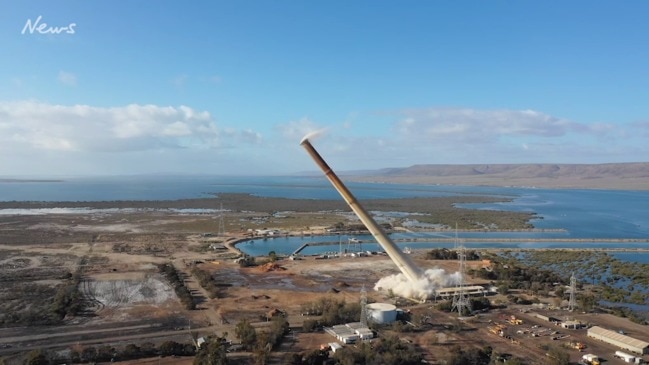
SA Business
Don't miss out on the headlines from SA Business. Followed categories will be added to My News.
- Demolition of SA’s last coal-fired power station complete
- Northern Power Station closure added $250 to electricity bills
- The sweeping plan to reinvigorate Whyalla
Commercial shipping would return to Port Augusta for the first time in almost half a century with a new port proposed for the former coal-fired power station site just outside the town.
Cu-River Mining has struck a deal with Flinders Power to buy the former site of Alinta Energy’s Northern and Playford A and B coal-fired power stations, and wants to build a port capable of exporting up to 15 million tonnes of iron ore per year.
More than 150 people would be employed building the port, which could start in just more than a year’s time, and up to 100 permanent positions would be created.
It is expected that other iron ore producers, and copper and grain exporters, could also use the facility, which has the scope to be expanded to a capacity of 50 million tonnes per year.
Under the plan, barges would be loaded at the port and then sail into deeper waters in Spencer Gulf where the iron ore would be trans-shipped to larger vessels.
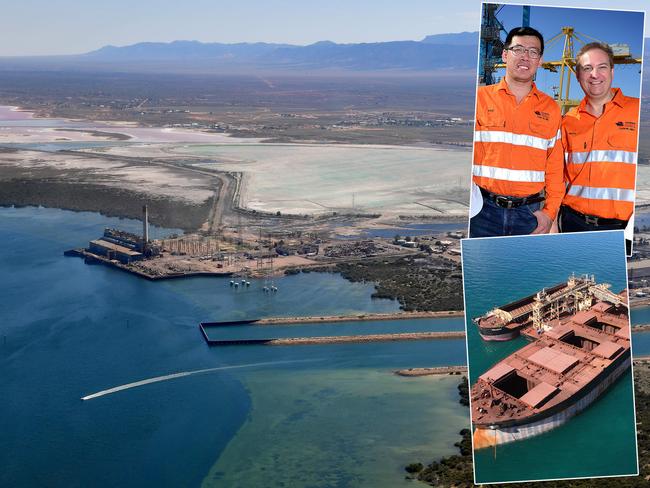
The total project value would be $250 million, with $185 million of that value in already existing infrastructure such as the rail loop, train unloading system and conveyors. Another $65 million would be invested. The sale price has not been disclosed.
The Chinese-backed company has owned the Cairn Hill iron ore mine southeast of Coober Pedy since 2014, where it has already mined and exported a million tonnes of ore, and plans to reopen it in the middle of this year, initially exporting three million tonnes per annum.
The company had been exporting iron ore through Port Adelaide, but external affairs manager Shelaye Boothey said the company wanted to increase its own production up to 15 million tonnes per year by 2026, and Port Adelaide was not suitable for such large volumes.
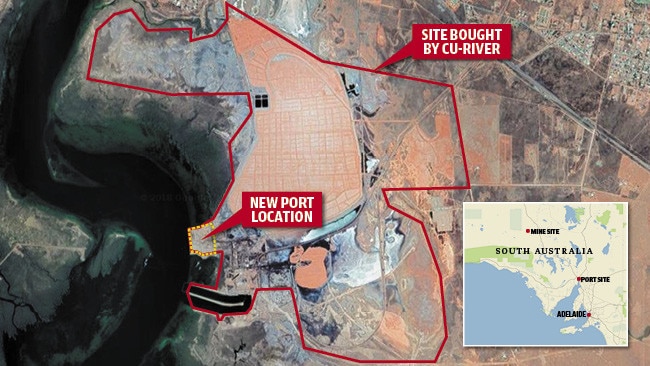
“Cu-River has a strong project pipeline and an ambitious growth strategy that will see it headquartered in South Australia for decades to come,” Ms Boothey said.
“The purchase of the site is a significant, strategic decision that allows Cu-River to secure a direct export pathway for the 15 million tonnes of high-grade iron ore magnetite it plans to mine each year from 2026.
“However, it is our intention to develop the port as a multi-user facility, providing Spencer Gulf and Far North industry with further export opportunities.’’
Ms Boothey said that due to the significant size of the site there is considerable scope for the land to be further developed for a number of commercial uses.
“We will be examining the feasibility of constructing a large-scale solar farm,” she said.
“However, we will be exploring every option to ensure the site’s commercial potential is maximised.
“Further development of the site will result in more jobs for Port Augusta, making this an exciting prospect.”
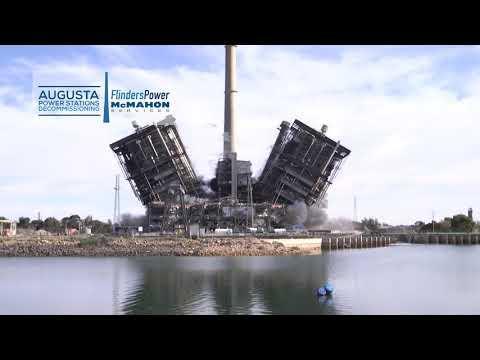
Ms Boothey said the Port Augusta site already had a 5km rail loop that previously was used to deliver coal from the Leigh Creek coal mine to the power station, which meant critical infrastructure for the port development was already in place.
The deal is being viewed as a win-win by Flinders Power, which said it had a number of expressions of interest for the site, but had settled on a solution which would create ongoing employment for the community.
Cu-River has started a feasibility study which will take about a year and construction would take 6-10 months, Ms Boothey said, meaning the project could be up and running within two years.
The mining company will also create another 80 jobs when it restarts Cairn Hill, which is scheduled for the middle of this year.
But another 350 jobs could be created over the next seven years, with Cu-River aiming to also develop its Snaefell and Tomahawk iron ore deposits.
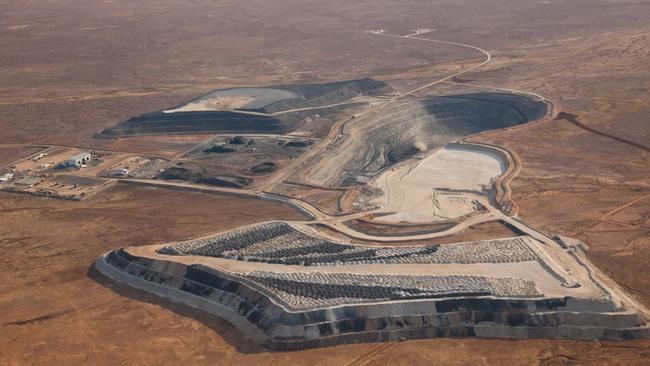
“Both are located to the south of Cairn Hill and expect to employ up to 750 each once production comes online,’’ the company said.
“Once all resources are brought into production by 2026 our goal is to produce 15 million tonnes of magnetite concentrate annually.
“This will make Cu-River the largest iron ore producer in South Australia and create hundreds of employment opportunities.’’
The Northern Power Station was closed in May 2016, and its two 260MW turbines were then decommissioned.
Cu-River will assume all of the environmental liabilities from Alinta Energy and plans to continue the Community Reference Group established by Flinders Power.
Flinders Power chief executive Peter Georgaris said the company was committed to meeting its closure and rehabilitation obligations.
“Rehabilitation and remediation are core to our agreed plan,” Mr Georgaris said.
“We are focused on a successful transition to a new and exciting future for this significant infrastructure site. I believe the transition of the site into a port facility is an outstanding opportunity for Port Augusta and the region.
“Cu-River is a well-credentialed organisation with an existing presence in the state and exciting plans for the future that involve jobs creation and economic benefit. Cu-River is well positioned to develop and responsibly manage the site into the future.”
cameron.england@news.com.au



